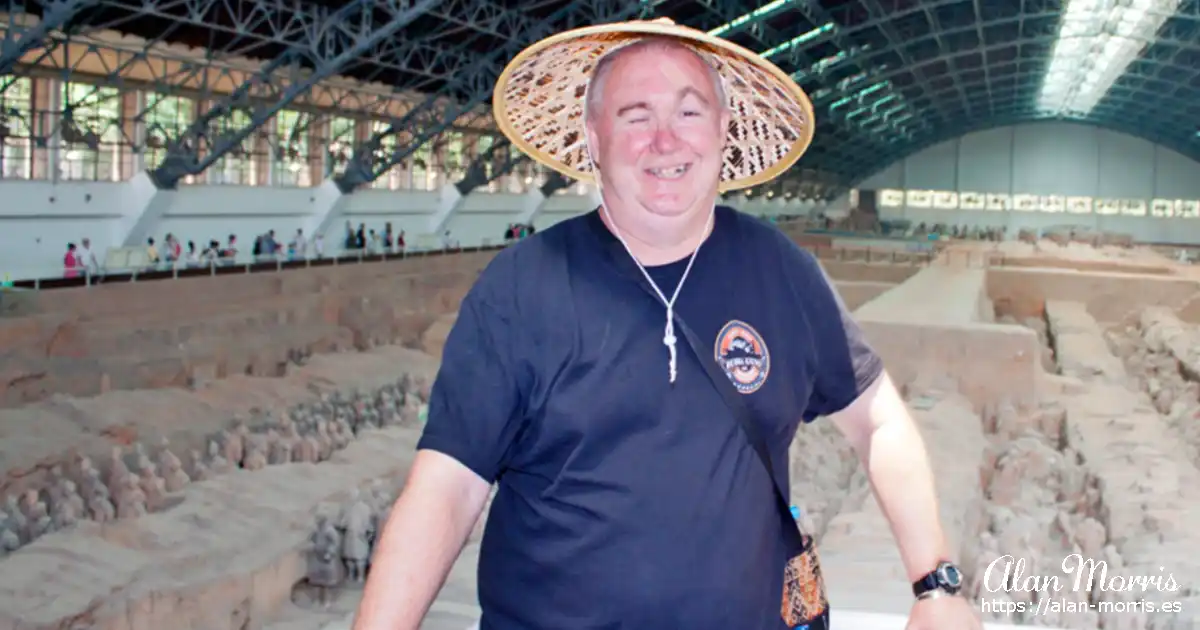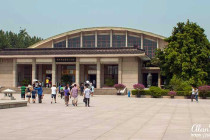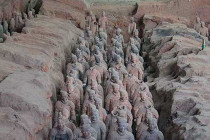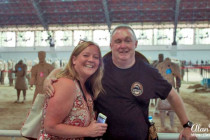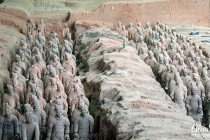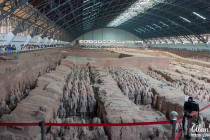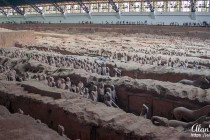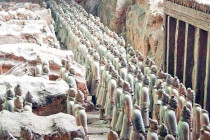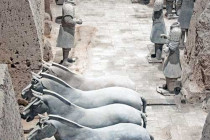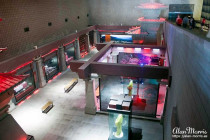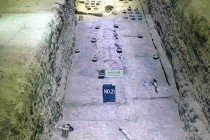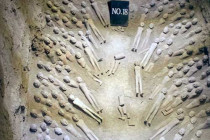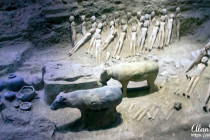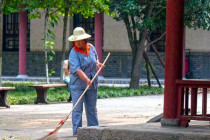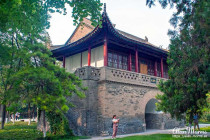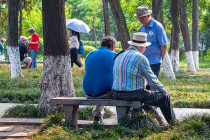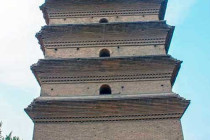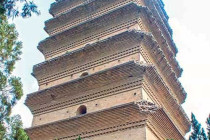Today, we went to see The Terracotta Warriors and the Small Wild Goose Pagoda.
We were picked up at the hotel by our coach, and after a short drive, we arrived at the site of the Terracotta Warriors, close to the Mausoleum of Qin Shi Huang, the first emperor of China. We were able to get our coach to drop us off right at the entrance rather than the central car park, and this saved us from having to walk in the hot sun for a long time.
On the way to see the Warriors, we were given the history of how a farmer found them and how the government had all his land taken from him. He was offered the lowly sum of ¥30 as compensation for the discovery and his fields. A government official found out years later, and the farmer was given a job at the centre to earn money. He now signs his autograph to a book about the Terracotta Army. In most Western countries, this now blind man would have become a millionaire, living a life of luxury. We were told that he was there on the day of our visit. I got a copy of the book, which he signed for me.
We walked around Pit 1, the pit that everybody sees in all the photos or television programmes. The Warriors here are very impressive, but there are large areas that have not been excavated yet, as they are trying to find a way to excavate without causing damage to the figures. When they uncover them, the air damages the figures, and they attempt to limit this as much as possible.
After visiting Pit 1, we walked to Pit 2, which was destroyed during a revolution and is filled with broken and smashed warrior figures. It’s a shame that people destroy history all over the world in this way. We should preserve as much as possible and teach the truth about what the people were revolting over.
Pit 3 is empty, but more at the centre still has to be excavated; this will be an extensive exhibit in years to come when the figures are excavated and put on display.
About the Terracotta Warrior Army.
The Terracotta Army is a collection of terracotta sculptures depicting the armies of Qin Shi Huang, the first emperor of China. It is a form of funerary art buried with the emperor in 210–209 BC to protect him in his afterlife.
The figures were discovered in 1974 by local farmers in Lintong County, outside Xi’an, Shaanxi, China. The figures vary in height according to their rank, the tallest being the generals. The figures include warriors, chariots and horses. Estimates from 2007 were that the three pits containing the Terracotta Army held more than 8,000 soldiers, 130 chariots with 520 horses, and 150 cavalry horses. The majority of which remain in situ in the pits near Qin Shi Huang’s mausoleum.
Terracotta Warrior Photos.
These photos were all taken when I looked around the Terracotta Warriors near Xian. Click on any image to see a larger version with a description.
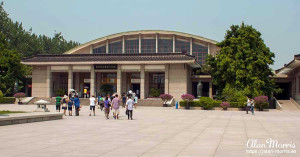
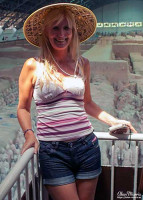

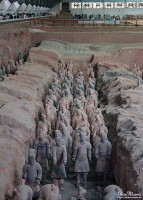
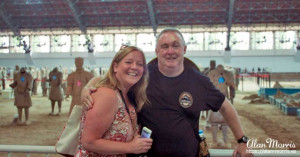

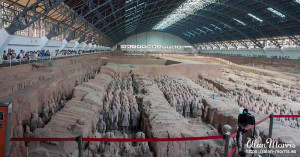

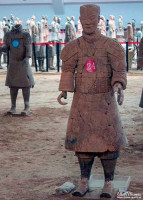
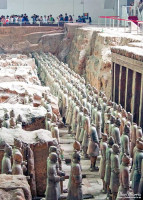
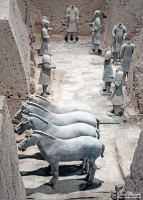
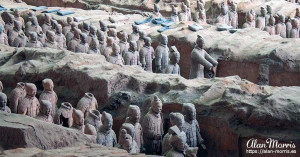
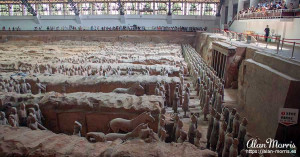


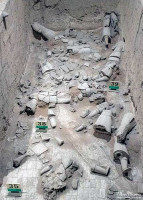
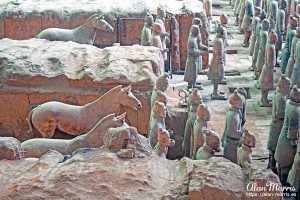
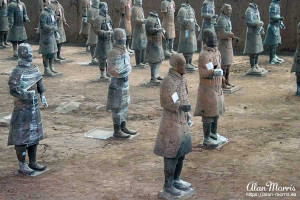
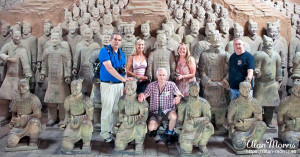
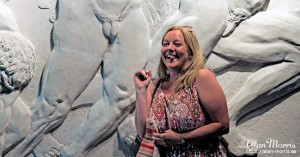
Han Yang Ling Museum.
Our guide told us that the Terracotta Army has around 8000 warriors, but the Han Tombs, where we were going, had over one hundred thousand figures of warriors and animals. He told us the history and told us that the figures were all buried with China’s 4th emperor. When we arrived at the Han Yang Ling Museum, we were all asked to wear little plastic bag shoes so as not to damage anything as we walked around.
After we were told how amazing the place was, it came as a big letdown. The figures are all relatively small and look more like Bill and Ben, the Flowerpot Men characters. They have no arms as these were made of wood and have long since rotted away. I think that it looks like a reject bin for characters from the Toy Story movies, or that this is where all the dolls were thrown after the film.
About the Han Yang Ling Museum.
The Han Yang Ling comprises two large burial mounds, 86 smaller burial pits and a criminals’ graveyard. The site also hosts a museum. The larger of the two mounds is the burial place of the Jing Emperor and it sits next to the slightly smaller mound of his Empress Wang. The mausoleum is surrounded by 86 outer burial pits, 21 accessible to visitors. The pits display more than 50,000 miniature terracotta figures reflecting the daily life of the Han emperor’s court, including eunuchs, servants, tools and domesticated animals. The human figurines are naked but were initially clothed with exquisite fabrics that decayed in the space of two millennia.
Han Yang Ling Museum Photos.
These photos were all taken on my brief visit to the Han Yang Ling Museum. Click on any image to see a larger version with a description.


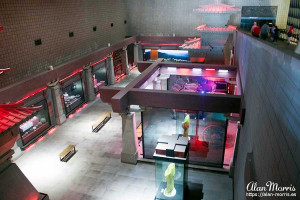
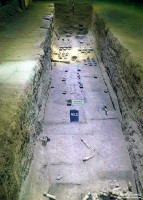

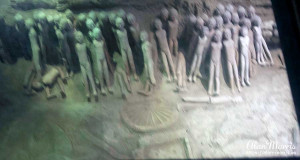
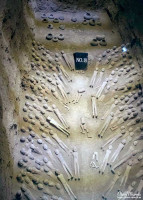

Small Wild Goose Pagoda.
We were only briefly at the Small Wild Goose Pagoda, which was a shame as the grounds were beautiful. While there, I did have a bang at the large Morning Bell Chimes of the Pagoda, which are in the gardens. I strike the bell three times and get the water in the surrounding tubs to overflow. I am told this will bring good luck and happiness and stop calamities.
About the Small Wild Goose Pagoda.
The Small Wild Goose Pagoda was built between 707 and 709 BC during the Tang dynasty under Emperor Zhongzong of Tang. The pagoda stood 45 metres until the 1556 Shaanxi earthquake. The earthquake shook the pagoda and damaged it so that it now stands at a height of 43 metres with fifteen tiers. The pagoda has a brick frame built around a hollow interior, and its square base and shape reflect the building style of other pagodas from the era.
Small Wild Goose Pagoda Photos.
These photos were all taken on my short visit to the Small Wild Goose Pagoda in Xian. Click on any image to see a larger version with a description.
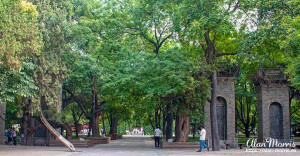
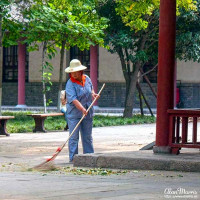
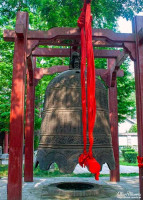
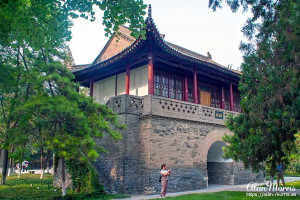

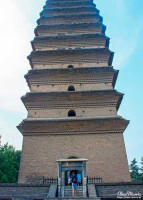
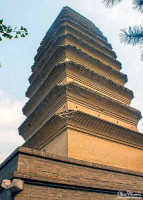
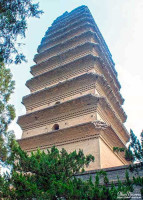
Dumpling-making lesson.
This evening, we were taken to a restaurant where we were taught to make Chinese dumplings. We were told that each dumpling is a different shape depending on its filling. For instance, a duck dumpling is the shape of a duck, a fish dumpling is the shape of a fish, and a cabbage dumpling is the shape of a cabbage. Unfortunately, all of my dumplings looked like an exploded bomb or a disabled animal. Tracy made a super-looking Cornish Pasty dumpling, but I’m not sure what filling we had all been given.
We were then taken to the restaurant section, where we were given 18 different dumplings for dinner. Some tasted great, others not so good, but we all learned that eating them was more straightforward than making them.
Tang Dynasty Show.
The Tang Dynasty Show had several acts appearing, but not, as many of us had expected, any acrobats. The musicians that started were terrible, and the noise they made sounded like someone strangling a cat. The dancers were all excellent, and even some of the stories that were told in Chinese could be followed to some degree, but on the whole, the show was not a hit with my travelling companions or me.
When we left, we were given a program for the show, which explained in English what each of the acts was about. I can’t help feeling that if we had been given this before the show, we would have understood and enjoyed the show more.
